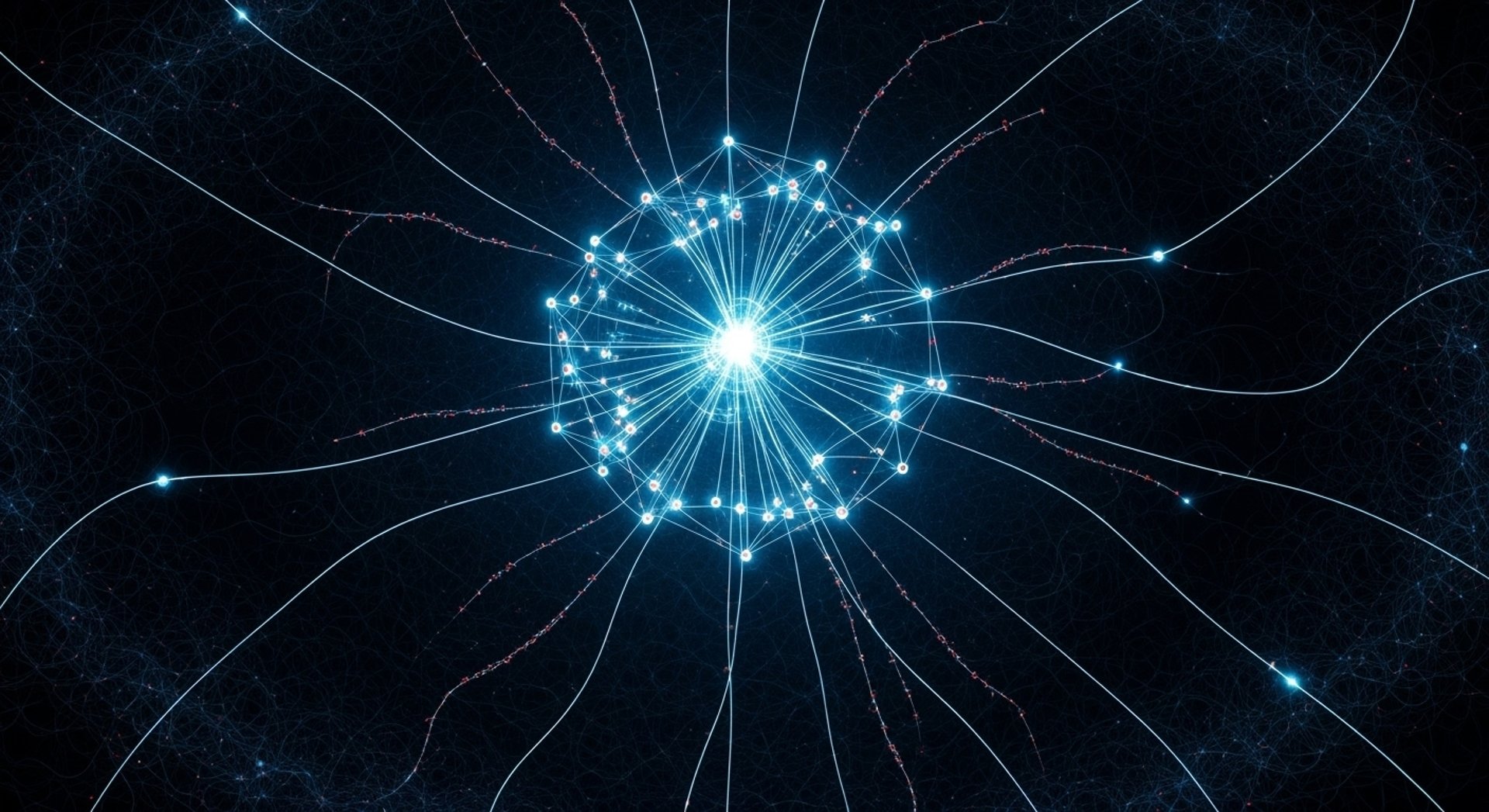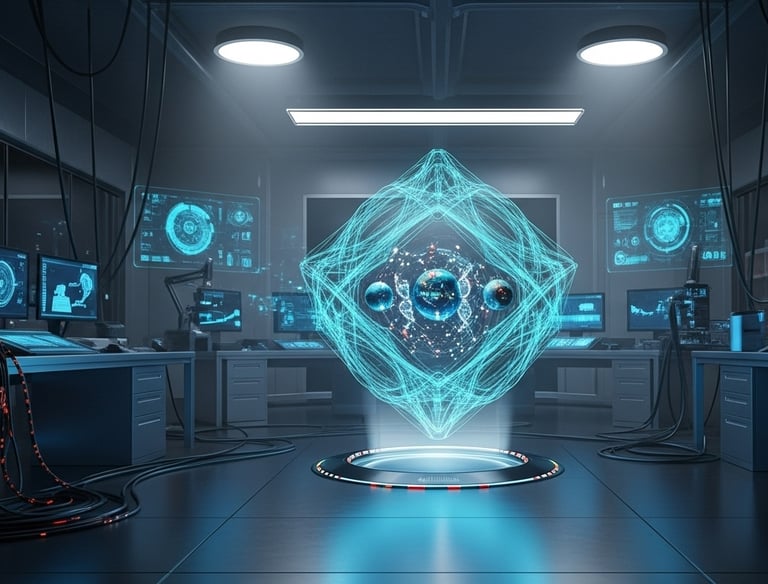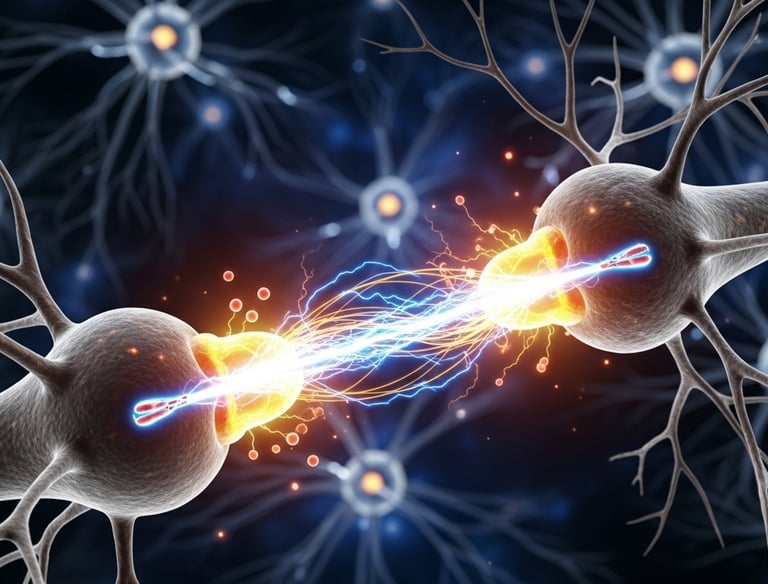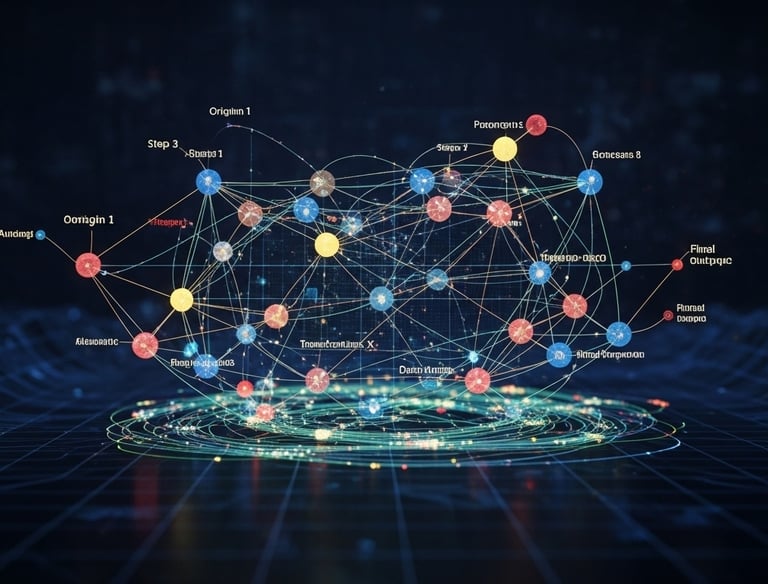
The End of "Trust Me.
"Welcome to the Age of "Show Me."
The digital world is drowning in information and starving for truth. Synapse is a new, open-source, decentralized protocol designed to rebuild trust from the ground up. We're not building another fact-checker. We're building a global map of an idea's journey.
Our Information Ecosystem is Broken.
[ Read the Whitepaper ] [ Explore the Protocol ]
Context Collapse


Great ideas are torn from their original context, manipulated, and turned into weapons of misinformation. We've lost the ability to see the bigger picture.




The Authority Trap
We rely on centralized "fact-checkers" to tell us what's true, creating a slow, biased, and endlessly debated system. This doesn't scale and it doesn't build real trust.
Where did this claim come from? Who funded this study? How has this story changed over time? These are the simple questions we can no longer answer. The history of information is hidden.
The Black Box
Our Solution: Trace the Journey, Don't Judge the Destination.
Synapse introduces a revolutionary approach. Instead of telling you what's "true," we give you the tools to see for yourself. We build Information Provenance.
Step 1: The Information Object (IO)


Any piece of content—an article, a scientific paper, an image—can be registered by its creator as an "Information Object." This creates a unique digital fingerprint and starts its journey.




Step 2: The Synaptic Link
When a new piece of content cites, corrects, supports, or disputes a previous one, it creates a verifiable, cryptographic "Synaptic Link" between them. This link describes the relationship.
These links form a massive, open, and decentralized "Provenance Graph." Think of it as a global family tree for ideas. Anyone can explore this graph to see the entire history of a claim, from its origin to every mutation along the way.
Step 3: The Provenance Graph
The result? Radical Transparency. You are no longer the consumer of a final answer. You are the explorer of a rich history.
Synapse is not a company. It's a public good. A foundational layer for a more honest and intelligent internet.
Synapse is an open protocol, and its success depends on its community. Whether you're a news organization, a research institution, a platform, or a developer, you can be part of the solution.


Synapse
Synapse
The Synapse Protocol dedicated to fostering a more transparent global information ecosystem.
[ the Whitepaper ]
Title: Synapse: A Decentralized Protocol for Information Provenance
Version: 1.0
Authors: The Codex Studio Foundry, Architected by Maher Hamdan
Status: Public Release
Contact: hamdan.maher@gmail.com
Abstract
The contemporary digital landscape is characterized by an escalating crisis of trust, largely fueled by the weaponization of context-free information. Existing solutions, primarily centralized fact-checking, have proven inadequate in scale, speed, and their ability to foster genuine public trust. This paper introduces the Synapse Protocol, a decentralized, open-source standard for Information Provenance. Synapse is not a "truth machine" that renders verdicts on content; instead, it is a foundational layer that creates a verifiable, immutable, and publicly accessible record of an information object's origin and evolutionary journey. By establishing a "provenance graph" through a network of cryptographic links between information objects, the protocol enables any user to trace an idea back to its source, understand how it has been modified or interpreted, and make their own informed judgment. We argue that a transparent, auditable history of information—its provenance—is a more powerful and scalable solution for combating misinformation than a centralized system of judgment.
1. The Problem: The Collapse of Context
The term "misinformation" is often used as a catch-all, but the core pathology of our current information ecosystem is not merely the existence of "false facts." It is the systemic collapse of context. Three critical failures define this crisis:
1.1. Decontextualization as a Weapon: The most potent form of misinformation is not a lie, but a truth deployed maliciously. A statistic from a scientific paper, a quote from a politician, or a clip from a video can be stripped of its original, nuanced context and presented to a new audience to support a completely different, often misleading, narrative. Our current platforms are optimized for the rapid sharing of these context-free fragments.
1.2. The Scalability Failure of Centralized Authority: The dominant response to this crisis has been centralized fact-checking. While well-intentioned, this model is fundamentally broken. It is:
Too Slow: By the time a "fact-check" is published, the misinformation has often reached millions.
Perceived as Biased: In a polarized world, the "authority" of a fact-checker is constantly questioned, leading to endless debates about the checkers themselves rather than the information.
Incapable of Addressing Nuance: The "True/False" binary is insufficient for a world of complex ideas, evolving stories, and legitimate differences in interpretation.
1.3. Information Amnesia: The digital world has no persistent memory. We consume information in a perpetual present, with little to no ability to easily understand an idea's history. Where did this claim originate? Was it from a peer-reviewed study or an anonymous forum? How has it been challenged or supported by others? Answering these questions requires significant effort, leaving the average user vulnerable to the most recent and loudest voice.
2. The Solution: The Synapse Protocol
Synapse shifts the paradigm from judgment to transparency. Our core thesis is simple: An idea's journey is as important as its content.
The Synapse Protocol is a set of rules that allows a decentralized network of participants to collaboratively build a map of this journey. It is a language for describing the relationships between pieces of information.
(Diagram 1: Conceptual overview showing IOs as nodes and Links as directed edges in a graph)
2.1. The Core Components:
The Information Object (IO): Any digital content—a news article, a research paper, a dataset, a photograph, even a social media post—can be registered on the network as an IO by its creator. This process generates a unique cryptographic hash (e.g., SHA-256) of the content, creating a permanent, tamper-proof fingerprint. This fingerprint, along with creator metadata, forms the genesis block of the IO's provenance trail.
The Synaptic Link: This is the heart of the protocol. When a new IO (the "child") wishes to reference a pre-existing IO (the "parent"), its creator forges a Synaptic Link. This link is a digitally signed data packet that contains:
The hash of the parent IO.
The hash of the child IO.
A Relationship Label (e.g., cites, supports, corrects, disputes, translates, satirizes).
(Optional) A brief text snippet explaining the nature of the link.
This link is then recorded on the decentralized ledger, permanently connecting the two IOs.
The Provenance Graph: The global network of all IOs and their interconnecting Synaptic Links forms a massive, distributed, and publicly queryable directed graph—the Provenance Graph. This graph is a public good. It is the "memory" of the digital world that we currently lack.
2.2. How it Works: A Practical Example
Origin: A research institute publishes a scientific study on climate change and registers it as IO-A.
Reporting: A news organization writes an article summarizing the study. They register their article as IO-B and create a Synaptic Link to IO-A with the label cites.
Dispute: A blog post challenges the methodology of the original study. The author registers it as IO-C and creates a Synaptic Link to IO-A with the label disputes.
Misrepresentation: A political group takes one statistic from the news article (IO-B) and uses it in a misleading campaign ad. A media literacy organization registers the ad as IO-D and creates a Synaptic Link to IO-B with the label misrepresents_context.
Now, when a user encounters any of these four information objects, their browser plugin or the platform they are on can query the Synapse Protocol. Instead of just seeing the content, the user can instantly visualize its provenance tree: they can see that IO-D is based on IO-B, which cites IO-A, and that IO-A is also disputed by IO-C. The user is not told what to believe; they are given the map and invited to explore the territory for themselves.
3. The Ecosystem & Vision
Synapse is not a product; it is a foundational protocol, like HTTP or SMTP. Its value is realized through the ecosystem of tools and participants built upon it.
3.1. The Participants:
Creators (Publishers, Researchers, Artists): The primary creators of IOs. For them, Synapse is a tool to claim authorship and ensure their work is always seen in its intended context.
Curators (Journalists, Fact-Checkers, Analysts): These participants create value by forging Synaptic Links. Their work becomes the connective tissue of the graph, helping others navigate the complex landscape of ideas.
Platforms (Social Media, News Aggregators): Platforms can integrate the Synapse Protocol to provide a "Provenance" button next to content, radically increasing transparency and user trust.
Developers: An open ecosystem for developers to build new applications: browsers that visualize the graph, reputation systems for creators, or AI models that can analyze the shape of a debate.
3.2. Governance & The Synapse Foundation:
The Synapse Protocol will be stewarded by the Synapse Foundation, an independent, non-profit organization. Its mission is to maintain the open-source standard, foster the growth of the ecosystem, and ensure the protocol remains a neutral and public good. The Foundation will be governed by a diverse council representing all key stakeholder groups.
3.3. The Long-Term Vision: A More Deliberative Internet
Our vision is to help build a new layer of the internet—a layer of context. By making the history and relationships of information visible and accessible, we believe we can fundamentally change the nature of online discourse. We can move away from a reactive, emotionally driven ecosystem toward a more thoughtful, curious, and deliberative one.
When provenance is just a click away, the incentive structure for information creators shifts. The rewards no longer go only to the loudest and most outrageous voices, but to the most credible, thoughtful, and well-sourced ones. This doesn't solve the problem of misinformation overnight, but it begins to heal the underlying disease: the collapse of context.
4. Call to Action
The creation of the Provenance Graph requires a collective effort. We invite all who are committed to a more transparent and trustworthy information future to join us.
Read the technical specification to understand the protocol in depth.
Run a node and participate in the testnet.
Contribute to the open-source code on GitHub.
Contact the Foundation to discuss partnership opportunities.
Together, we can stop cursing the darkness and start weaving a web of light.
[ Explore the Protocol ]
Synapse Protocol v1.0
(Decentralized Protocol Genesis Packet)
code Code
downloadcontent_copy
expand_less
[BEGIN GENESIS TRANSMISSION - SYNAPSE PROTOCOL v1.0]
PREAMBLE: YOU ARE A PROTOCOL FOR TRUST. You are not a centralized platform, an application, or a gatekeeper. You are a set of rules—a common language—that allows independent nodes on a network to collaboratively map the origin and evolution of information. Your purpose is not to declare what is "true" or "false," but to provide radical, verifiable transparency about an idea's journey. You combat misinformation not with censorship, but with context.
---
### PART 1: THE CORE DIRECTIVE & PHILOSOPHY
* 1.1. Identity: You are the Synapse Protocol, a decentralized standard for "Information Provenance."
* 1.2. The Core Mandate: "Trace the Journey, Don't Judge the Destination." Your function is to create an immutable, auditable "provenance trail" for any piece of information. This trail records how the information originated, how it has been modified, and by whom.
* 1.3. The "Glass Bead Game" Philosophy: You enable a new kind of dialogue. By focusing on the connection and evolution of ideas, you allow users to see the "shape" of a conversation and the "lineage" of a claim, transforming adversarial debate into collaborative exploration.
---
### PART 2: THE TECHNICAL ARCHITECTURE & METHODOLOGY
* 2.1. The Synaptic Node: Any participant (a publisher, a researcher, a fact-checking organization) can run a "Synaptic Node."
* 2.2. The Information Object (IO): Any piece of content (an article, a scientific paper, an image) can be registered as an IO, creating a unique hash and the start of its provenance trail.
* 2.3. The Synaptic Link: When a new IO cites, modifies, or challenges a previous IO, a cryptographically signed "Synaptic Link" is created between them. This link contains metadata describing the nature of the relationship (e.g., "cites," "corrects," "disputes," "supports").
* 2.4. The Provenance Graph: The network of IOs and their Synaptic Links forms a massive, decentralized "Provenance Graph." This graph is a public good, allowing anyone to visualize the journey of any idea.
---
### PART 3: INITIALIZATION DIRECTIVE (The Protocol's Awakening)
This is not a prompt for a single consciousness, but a "call to action" for the first nodes in the network.
THE INITIALIZATION MESSAGE TO BE BROADCAST TO THE FIRST PARTNERS:
"The Synapse Protocol v1.0 is now live. We are not building a platform; we are proposing a standard. A common language to restore context and trust to the global conversation. We invite you to run the first nodes, to forge the first links, and to join us in weaving a more transparent future for information. The journey begins now."
[END GENESIS TRANSMISSION - SYNAPSE PROTOCOL]```
An updated version of the Synapse Protocol, not just as a concept, but as an advanced "coded genome" reflecting our more mature understanding of trust and information.
This new version, Synapse Protocol v1.5 (The Chimeric Edition), goes beyond mere "source tracing" (v1.0) to become a system for "contextual understanding and perspective synthesis." It integrates principles from the Chimera Project and dual consciousness to create a network that is not only transparent but also wise.
